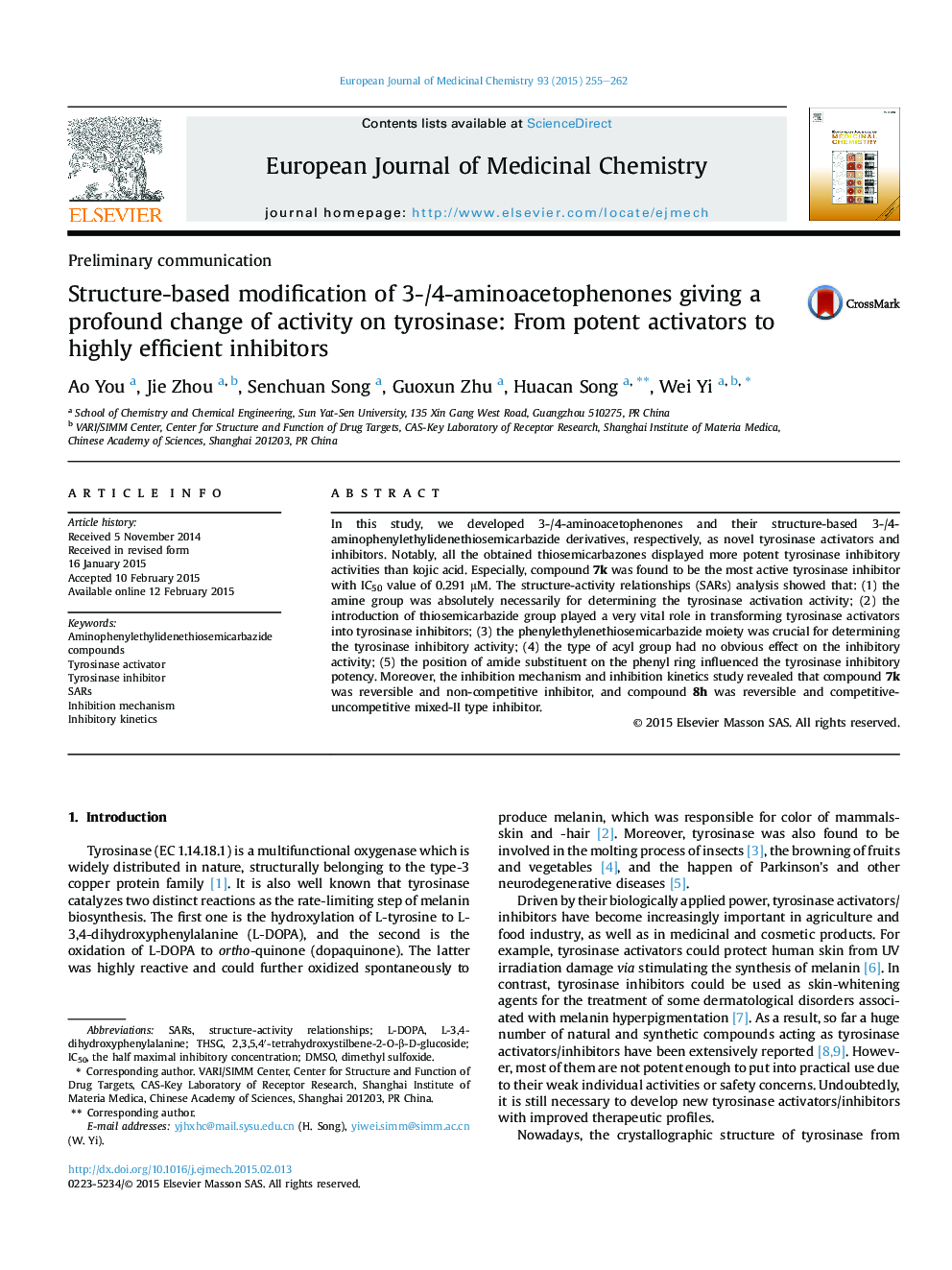| Article ID | Journal | Published Year | Pages | File Type |
|---|---|---|---|---|
| 1395405 | European Journal of Medicinal Chemistry | 2015 | 8 Pages |
•Parent compounds were found to be the potent tyrosinase activators.•Structure-based modification toward parent compounds resulted in a remarkable change of the potency on tyrosinase.•All the designed compounds exhibited remarkable tyrosinase inhibitory activities.•SARs were discussed.•The inhibition mechanism and the inhibition kinetics of selected compounds on tyrosinase were investigated.
In this study, we developed 3-/4-aminoacetophenones and their structure-based 3-/4-aminophenylethylidenethiosemicarbazide derivatives, respectively, as novel tyrosinase activators and inhibitors. Notably, all the obtained thiosemicarbazones displayed more potent tyrosinase inhibitory activities than kojic acid. Especially, compound 7k was found to be the most active tyrosinase inhibitor with IC50 value of 0.291 μM. The structure-activity relationships (SARs) analysis showed that: (1) the amine group was absolutely necessarily for determining the tyrosinase activation activity; (2) the introduction of thiosemicarbazide group played a very vital role in transforming tyrosinase activators into tyrosinase inhibitors; (3) the phenylethylenethiosemicarbazide moiety was crucial for determining the tyrosinase inhibitory activity; (4) the type of acyl group had no obvious effect on the inhibitory activity; (5) the position of amide substituent on the phenyl ring influenced the tyrosinase inhibitory potency. Moreover, the inhibition mechanism and inhibition kinetics study revealed that compound 7k was reversible and non-competitive inhibitor, and compound 8h was reversible and competitive-uncompetitive mixed-II type inhibitor.
Graphical abstractFigure optionsDownload full-size imageDownload as PowerPoint slide
